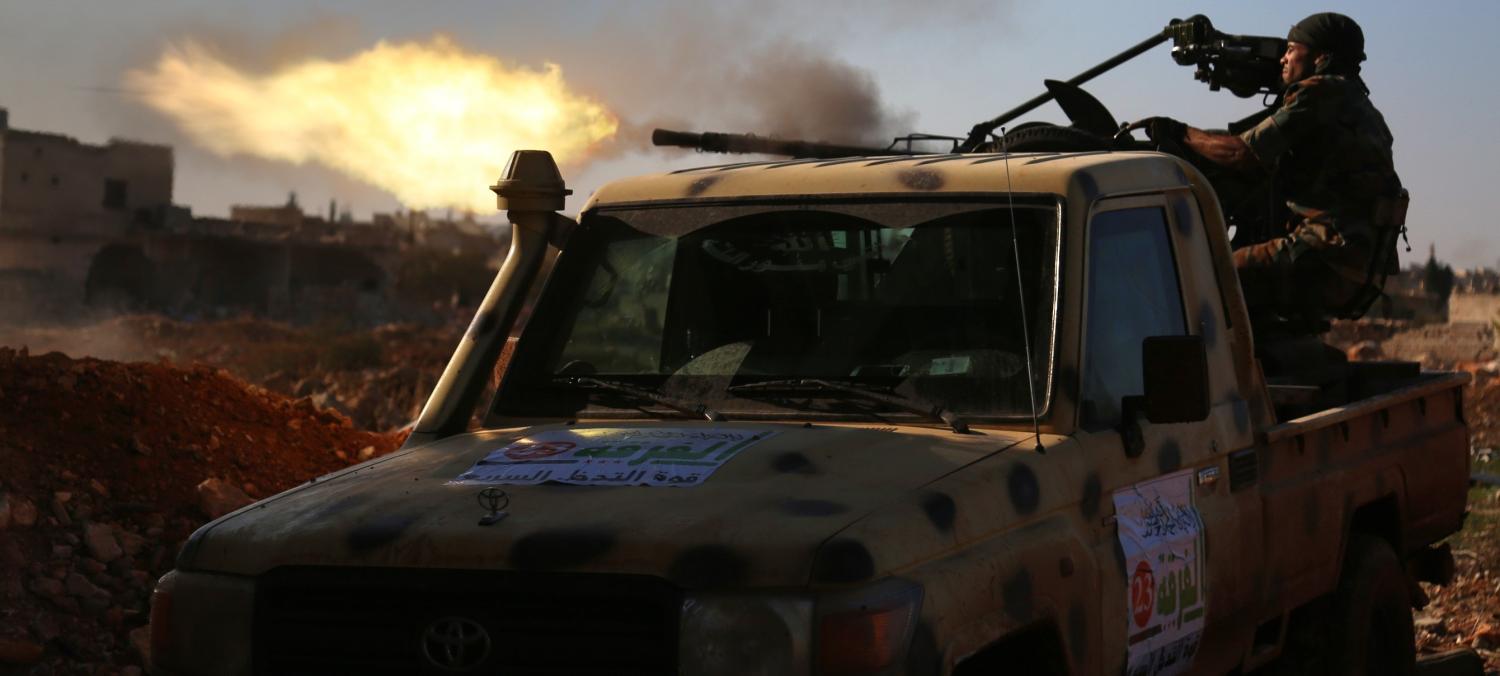As Aleppo falls and a last-minute evacuation and cease-fire is implemented, there is the familiar cry in the global community that we (read: the West) have abandoned the civilians in east Aleppo to brutal Russian and Syrian forces intent on eradicating them. In October the Qatari foreign minister even penned a piece in The New York Times calling for foreign military intervention to save the innocent civilians – somewhat ironic given Qatar’s rather duplicitous role in bankrolling a number of Islamist or Salafist groups involved in Syria and elsewhere.
It’s true that many civilians have died and will die in Aleppo at the hands of the Assad regime. The wide use of area weapons inside populated areas contravenes international humanitarian law, and there are reports (unverified and in many cases from pro-opposition outlets) that extra-judicial killings have been carried out. All horrible.
But it is also fair to focus on the armed groups in east Aleppo, and why they appeared willing to fight to the last Syrian civilian, even after their fate was sealed. East Aleppo was going to fall, but the armed groups ensured that more of it was destroyed and more civilians within it were killed than ever needed to be the case.
It's difficult for the world's media to provide balanced reporting from confusing conflict zones, and it's both easy and tempting to portray the issue as a binary problem. In the case of Aleppo, for all intents and purposes the media portrayed the conflict as one of the Assad regime and its allies pounding civilians in east Aleppo into submission.
But Aleppo and the broader Syrian conflict is not a binary issue; it has never really ever been one. The media tend to airbrush away the armed groups and focus on civilians being deliberately or inadvertently targeted by regime forces.
To do this is understandable – most journalists have neither military operational knowledge nor experience, or a deep understanding of jihadist groups. They have no access to intelligence information. Armed groups have a narrative that they want to dominate the media cycle, and this does not involve revealing their political or religious orientation, financial backers, or strategic intent. They want to focus on civilians. Thus a focus on human interest stories is understandable. But it is also lazy journalism. The media paints a picture of the attackers, and uncovers harrowing stories of civilians inside besieged areas, but downplays the role of these armed groups.
Where, for instance, are stories that attempt to get a picture of the armed groups operating inside Aleppo proper, reports that tell what their affiliations are, why they have deployed within and among civilians in contravention of international humanitarian law, and, perhaps most importantly, what military objective did they think they were going to achieve by continuing to fight after the encirclement had been completed? The regime’s tactics are clear and what they have done in Aleppo is the same as in Homs, Daraya and other locations: encircle populated locations held by armed opposition groups; bring sufficient combat power to bear over an extended period of time; and then negotiate for the fighters and their families to leave.
Knowing this, surely it was apparent from the time the encirclement was completed and the attempt to break the siege failed that only one outcome was possible: the defeat of the armed groups inside east Aleppo. Knowing that continuing to fight amongst the civilian population would only lead to more civilian deaths, and that the Syrian forces would not stop until they had pressed home their military advantage, why didn’t the world’s media shift some focus onto the armed groups inside Aleppo and ask what they were achieving by being there? A media campaign that focused on the futility of fighting on, asked tough questions of the armed groups and their foreign backers, and called for the fighters to negotiate surrender and safe passage under UN auspices may well have achieved something. It may have helped to save civilian lives.
Rather than parrot opposition groups’ social media claims and despair at the West’s unwillingness to intervene militarily to save civilian lives, in situations as hopeless as Aleppo the media may be better served by holding a spotlight on the armed groups. The media could continue to criticise the Syrian regime’s military onslaught, but if the aim is to save civilian lives it is only fair to ask why the armed groups seemed intent on fighting to the last civilian in Aleppo.

